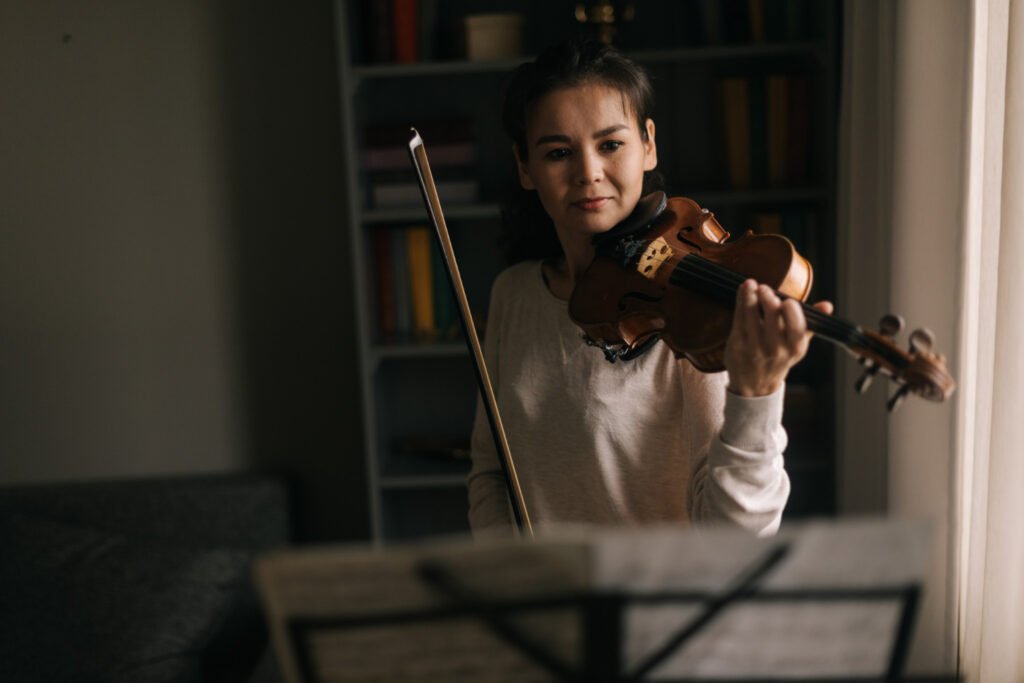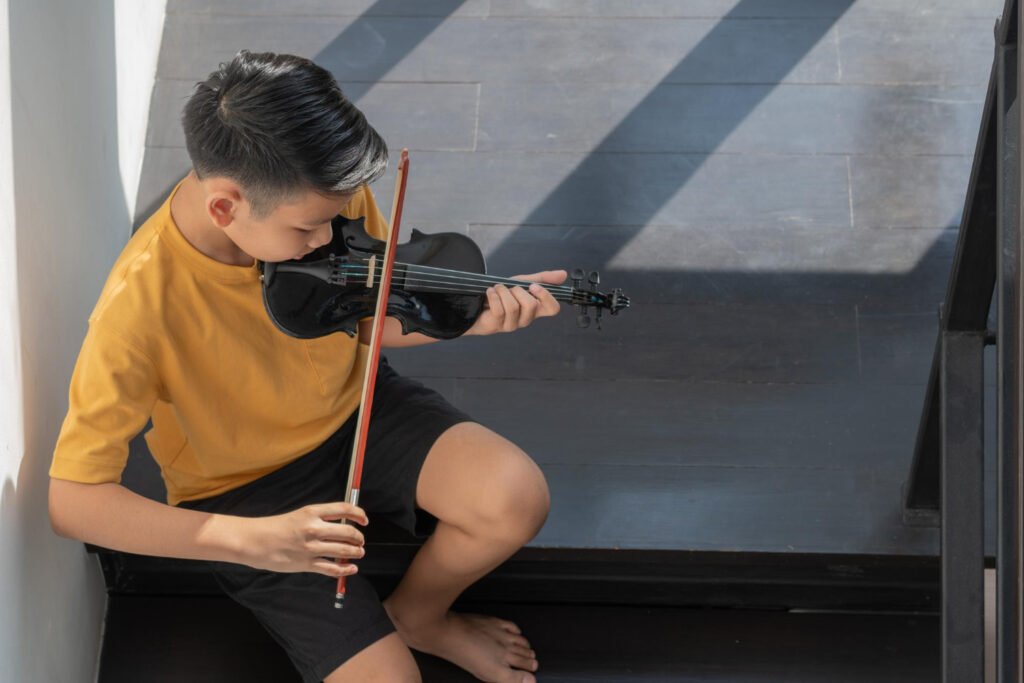Introduction: The Challenge and Beauty
Learning the violin is a demanding yet fulfilling journey that tests a musician’s patience and perseverance. Unlike other instruments, the violin does not produce an immediate pleasant sound without careful technique. Beginners often struggle with finger positioning, bow control, and intonation. However, as skills develop, the violin becomes an expressive tool capable of conveying deep emotions. Despite its challenges, the rewards of mastering this instrument far outweigh the difficulties.
Many aspiring musicians choose the violin because of its elegance and versatility. Yet, the instrument demands a level of dedication that can be daunting. The process involves training the mind and body to work in perfect harmony. While some may initially find the violin discouraging, those who persist develop a profound connection with their instrument. The road to proficiency requires countless hours of practice, but the ability to perform soul-stirring melodies makes every struggle worthwhile.
The Complexity of Violin Technique
Playing the violin requires precision and technique from the start. Unlike a piano, where pressing a key produces an immediate note, a violinist must carefully place their fingers to achieve the correct pitch. The absence of frets makes accuracy difficult, and even the slightest misplacement results in an off-key note. Bowing also requires proper hand movement and pressure coordination, demanding strength and finesse. Developing these techniques takes years of practice and refinement.
Learning to control the bow is one of the most challenging aspects of violin playing. The bow must move straight across the strings while maintaining consistent pressure. Too much force creates a scratchy tone, while too little produces an airy, weak sound. Vibrato, an essential technique for adding warmth and emotion to music, also requires meticulous finger coordination. The difficulty of mastering these techniques is why many beginners find playing the violin frustrating in the early stages.
The Physical Demands of Playing
Holding and playing the violin requires significant physical coordination. Proper posture is crucial for both comfort and performance. The left hand must maintain a relaxed grip while the fingers press the strings precisely. Simultaneously, the right hand must control the bow with delicate yet firm pressure. Poor posture can lead to muscle strain and discomfort, making early training in body positioning essential. As violinists advance, they develop strength and endurance to perform complex pieces effortlessly.

Maintaining a steady hand while bowing is physically demanding. Violinists must keep their arms elevated for long periods, which can cause muscle fatigue. Finger dexterity is critical, as playing fast passages requires agility and control. Over time, violinists develop muscle memory, allowing them to move their fingers with minimal effort. Strengthening these muscles through targeted exercises improves endurance, enabling musicians to play for extended durations without strain.
The Mental and Emotional Challenge
Learning the violin is as much a mental exercise as a physical one. Recognizing pitch and adjusting finger placement on the fly requires sharp concentration. Beyond technical mastery, musicians must also develop an emotional connection with their music, interpreting pieces in a way that resonates with listeners. The mental resilience required to persist through difficult passages and tedious practice sessions strengthens a musician’s character and patience.
Memorizing pieces, sight-reading music, and coordinating both hands simultaneously require intense focus. Unlike some instruments that allow players to recover easily from mistakes, a single missed note on the violin is highly noticeable. This high level of precision demands unwavering attention. Developing emotional expression also takes time. Many advanced players spend years refining their ability to communicate emotions through playing, making each piece uniquely personal.
Common Struggles Beginners Face
Many beginners experience frustration when they struggle to produce clear and consistent sounds. Unlike wind or keyboard instruments, where notes are predetermined, violinists must develop muscle memory to find the right notes accurately. Coordination between bowing and fingering often feels unnatural initially, leading to frequent mistakes. These struggles can discourage learners, but with consistent practice and proper guidance, progress becomes noticeable over time.
Beginners often find it challenging to balance bow control with left-hand finger placement. Additionally, transitioning between notes smoothly without producing unwanted noise requires extensive training. Finding the correct finger positions without visual markers forces players to rely on auditory feedback, which takes time to develop. Many students become discouraged when their sound does not match their expectations, but overcoming this phase is part of the learning journey.
Effective Practice Strategies for Progress
Developing an efficient practice routine is key to overcoming violin challenges. Practicing slowly and focusing on technique ensures better long-term improvement. Breaking pieces into smaller sections allows targeted learning, and regular repetition builds muscle memory. Warm-up exercises enhance flexibility and prevent injuries. Structured practice with clear goals helps violinists measure progress and stay motivated. With consistency and determination, noticeable improvements emerge.

Effective practice involves mindful repetition rather than mindless playing. Setting specific goals for each session helps build skills incrementally. Recording practice sessions provide valuable insight into progress and areas that need improvement. Taking short breaks between sessions prevents fatigue and improves concentration. Incorporating listening exercises and studying professional performances also helps refine technique and interpretative skills.
The Rewarding Journey of Mastery
Despite the hardships, reaching a level of mastery brings immense joy. The satisfaction of playing a piece flawlessly after weeks of practice is unparalleled. The violin is one of the most expressive instruments, allowing musicians to evoke emotions through delicate phrasing and dynamic control. The ability to perform in front of an audience or collaborate in an orchestra builds confidence and strengthens interpersonal connections. The sense of accomplishment, overcoming the challenges, and mastering this beautiful instrument is a reward.
The violin’s expressive capabilities allow musicians to convey a wide range of emotions, from sorrowful melodies to uplifting compositions. Playing in ensembles enhances teamwork and communication skills. Many violinists find immense joy and fulfillment in sharing their music with others, whether in a concert setting or informal gatherings. This sharing creates a sense of community and connection, enriching the musical journey.
The Cognitive and Social Benefits
Learning the violin enhances cognitive functions such as memory, concentration, and problem-solving. Reading sheet music while playing strengthens mental agility, while finger dexterity improves fine motor skills. Socially, violinists gain opportunities to perform with ensembles, fostering teamwork and collaboration. Music also bridges cultural gaps, connecting people through shared artistic experiences. These cognitive and social benefits enrich the musical journey and positively impact other areas of life, making the violin a truly rewarding pursuit.
Scientific studies suggest that learning an instrument like the violin strengthens neural connections in the brain. Musicians develop heightened auditory processing skills, benefiting language learning and communication. Additionally, participating in group rehearsals fosters a sense of belonging and teamwork. Many lifelong friendships are formed through musical collaborations, making the violin an instrument that connects people on a deeper level.
Advanced Techniques for Excellence
As violinists progress, they explore advanced techniques that elevate their artistry. Mastering vibrato adds richness to the sound, while shifting positions expands note accessibility. Complex bowing styles like spiccato and staccato enhance musical expression. Developing an individual playing style makes performances unique and engaging. These techniques require precision and dedication but allow musicians to realize the violin’s expressive potential fully.

Advanced players often experiment with different bowing styles to enhance articulation. Learning to shift between positions smoothly allows access to a wider range of notes. Double stops, harmonics, and pizzicato add variety to performances, allowing musicians to bring their unique interpretations to compositions. Each new technique requires patience and perseverance, reinforcing the lifelong nature of violin learning.
Conclusion: The Reward is Worth It
Mastering the violin is undoubtedly difficult, but the journey is deeply rewarding. Overcoming technical challenges, developing expressive skills, and enjoying the instrument’s beauty make the effort worthwhile. The discipline required for violin learning extends beyond music, shaping perseverance, confidence, and creativity. Whether for personal fulfillment or professional aspirations, the violin remains a timeless instrument that continues to inspire.
For expert violin instruction and guidance, contact us:
🔗 Facebook | Instagram | YouTube | X

This is exactly what i was looking for, thank you so much for these tutorials
It would be great to try this theme for my businesses
What a nice article. It keeps me reading more and more!